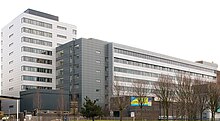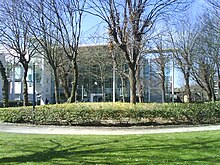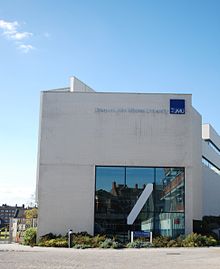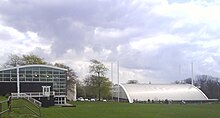
Manchester Metropolitan University (MMU) is located in the centre of Manchester, England. The university has over 40,000 students and over 4,000 members of staff. It is home to four faculties and is one of the largest universities in the UK, measured by the size of its student population in 2020/21.
The University of Brighton is a public university based on four campuses in Brighton and Eastbourne on the south coast of England. Its roots can be traced back to 1858 when the Brighton School of Art was opened in the Royal Pavilion. It achieved university status in 1992.

The University of Liverpool is a public research university in Liverpool, England. Founded as a college in 1881, it gained its Royal Charter in 1903 with the ability to award degrees, and is also known to be one of the six 'red brick' civic universities, the first to be referred to as The Original Red Brick. It comprises three faculties organised into 35 departments and schools. It is a founding member of the Russell Group, the N8 Group for research collaboration and the university management school is triple crown accredited.

Sheffield Hallam University (SHU) is a public research university in Sheffield, South Yorkshire, England. The university is based on two sites; the City Campus is located in the city centre near Sheffield railway station, while the Collegiate Crescent Campus is about two miles away in the Broomhall Estate off Ecclesall Road in south-west Sheffield. A third campus at Brent Cross Town in the London Borough of Barnet is expected to open for the 2025–26 academic year.
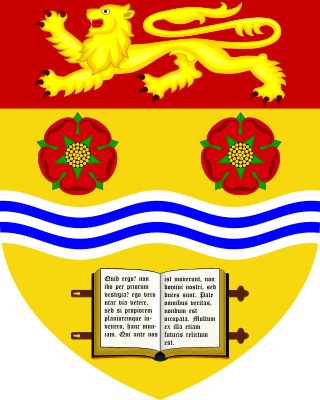
Lancaster University is a public research university in Lancaster, Lancashire, England. The university was established in 1964 by royal charter, as one of several new universities created in the 1960s.
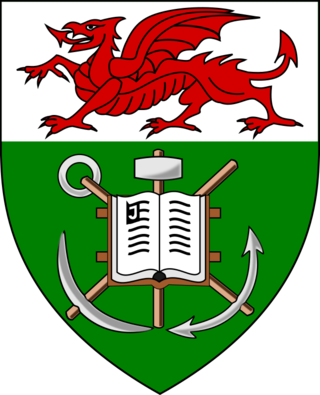
Swansea University is a public research university located in Swansea, Wales, United Kingdom.
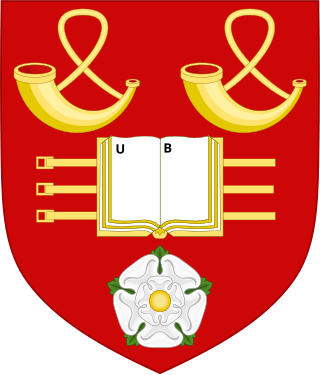
The University of Bradford is a public research university located in the city of Bradford, West Yorkshire, England. A plate glass university, it received its royal charter in 1966, making it the 40th university to be created in Britain, but can trace its origins back to the establishment of the industrial West Yorkshire town's Mechanics Institute in 1832.

The University of Wolverhampton is a public university located on four campuses across the West Midlands, Shropshire and Staffordshire in England. The roots of the university lie in the Wolverhampton Tradesmen's and Mechanics' Institute founded in 1827 and the 19th-century growth of the Wolverhampton Free Library (1870), which developed technical, scientific, commercial and general classes. This merged in 1969 with the Municipal School of Art, originally founded in 1851, to form the Wolverhampton Polytechnic.
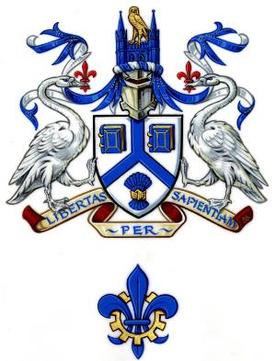
The University of Lincoln is a public research university in Lincoln, England, with origins dating back to 1861. It gained university status in 1992 and its present name in 2001. The main campus is in the heart of the city of Lincoln alongside the Brayford Pool. There are satellite campuses across Lincolnshire in Riseholme and Holbeach and graduation ceremonies take place in Lincoln Cathedral.
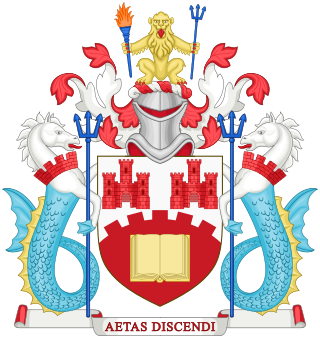
Northumbria University is a public research university located in Newcastle upon Tyne, North East of England. It has been a university since 1992, but has its origins in the Rutherford College, founded in 1877.

The University of Chester is a public university located in Chester, England. The university originated as the first purpose-built teacher training college in the UK. As a university, it now occupies five campus sites in and around Chester, one in Warrington, and a University Centre in Shrewsbury. It offers a range of foundation, undergraduate and postgraduate courses, as well as undertaking academic research.

Sri Lanka Institute of Information Technology is a private university located in Malabe and Colombo, Sri Lanka. It specialises in various fields like technology and management.

Liverpool Hope University is a public university with campuses in Liverpool, England. The university grew out of three teacher training colleges: Saint Katharine's College, Notre Dame College, and Christ's College. Uniquely in European higher education, the university has an ecumenical tradition, with Saint Katharine's College having been Anglican and Notre Dame and Christ's College having both been Catholic. The Anglican Bishop of Liverpool David Sheppard and the Catholic Archbishop of Liverpool Derek Worlock played a prominent role in its formation. Its name derives from Hope Street, the road which connects the city's Anglican and Catholic cathedrals, where graduation ceremonies are alternately held.

John Moores Students' Union (JMSU) is the students' union of Liverpool John Moores University (LJMU) in Liverpool, England; membership is automatic upon enrolment within the university.
The IM Marsh Campus is a former university campus in south Liverpool. It was, until 2021, home to the School of Education, Leisure and Sport Studies and the School of Teacher Education and Professional Learning, of Liverpool John Moores University.

The Avril Robarts Library (formerly the Avril Robarts Learning Resource Centre (LRC)) is one of the two designated libraries belonging to Liverpool John Moores University (LJMU) in Liverpool, England. It stands at 79 Tithebarn Street and serves the City Campus located mostly on Byrom Street.

The Aldham Robarts Library (formerly the Aldham Robarts Learning Resource Centre (LRC)), is one of two designated libraries belonging to Liverpool John Moores University (LJMU) in Liverpool, England. It is located at Maryland Street and serves the Mount Pleasant Campus situated in Liverpool's Knowledge Quarter. Designed by the architectural firm Austin-Smith:Lord and built in 1994, the Aldham Robarts Library has won numerous architectural awards. The four-storey, 5,324 m2 (57,310 sq ft) building contains 386 personal computers alongside countless books and online catalogues that cater mainly for the Faculty of Arts, Professional and Social Studies and the Faculty of Business and Law. Wi-Fi is available throughout the complex, which can be entered by scanning a relevant student ID card by the ground floor turnstiles. Other services available in the Library include research and learner support. The Aldham Robarts Library is open 7 days a week during term time.

The John Lennon Art and Design Building in Liverpool, England, houses Liverpool John Moores University's School of Art and Design. The school was formerly located at the Grade II listed Liverpool College of Art, which now houses LJMU's School of Humanities and Social Science.
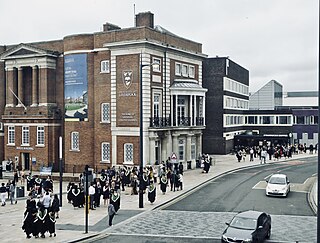
The "Knowledge Quarter" is an area of Liverpool city centre covering 450 acres, incorporating the vicinity around London Road, Islington, the so called 'Fabric District', Paddington Village and part of Canning.

The Astrophysics Research Institute (ARI) is an astronomy and astrophysics research institute in Merseyside, UK. Formed in 1992, it stood on the Twelve Quays site in Birkenhead from 1998 until June 2013 when it relocated to the Liverpool Science Park in Liverpool. It is in the top 1% of institutions in the field of space science as measured by total citations.


